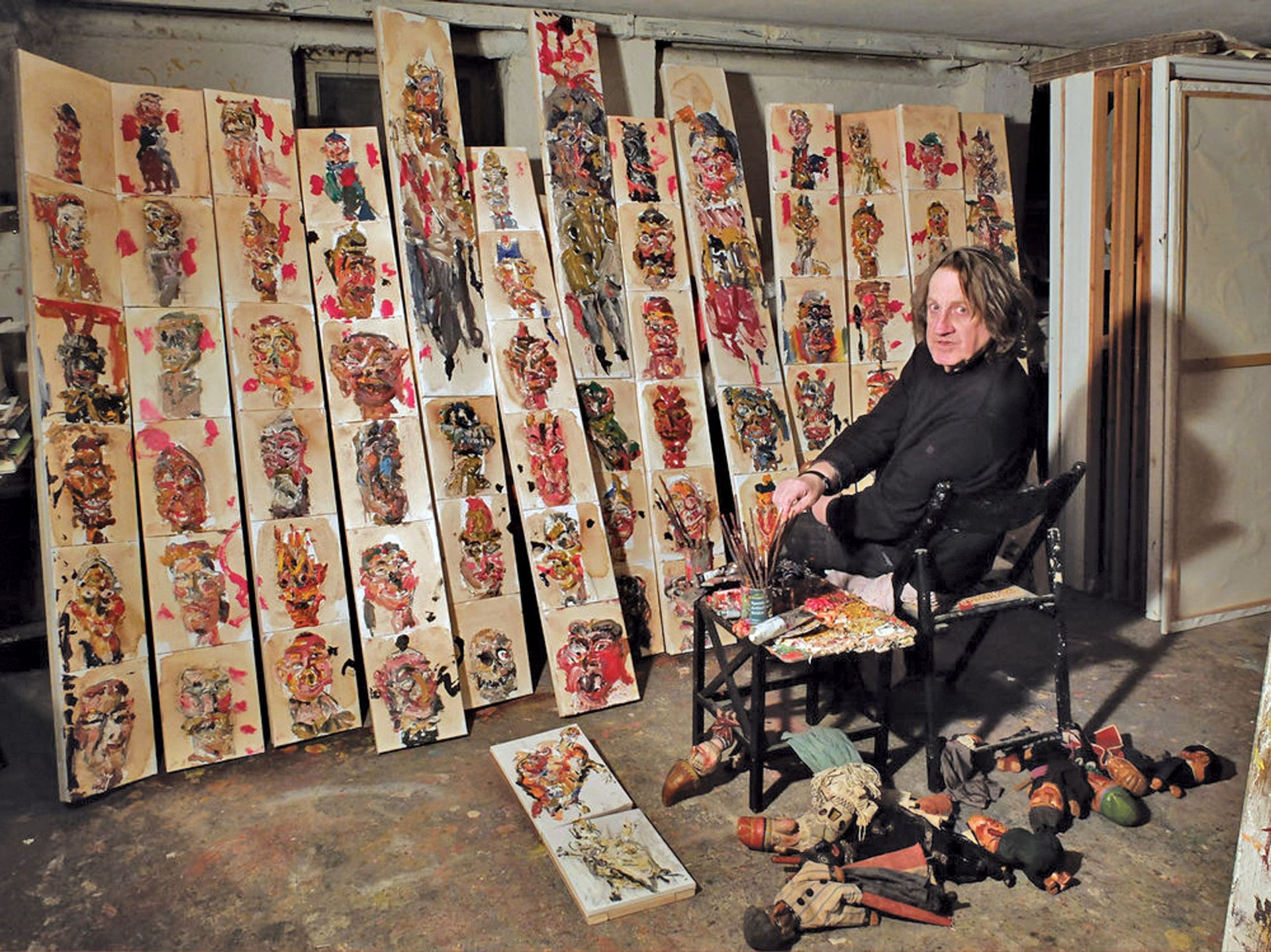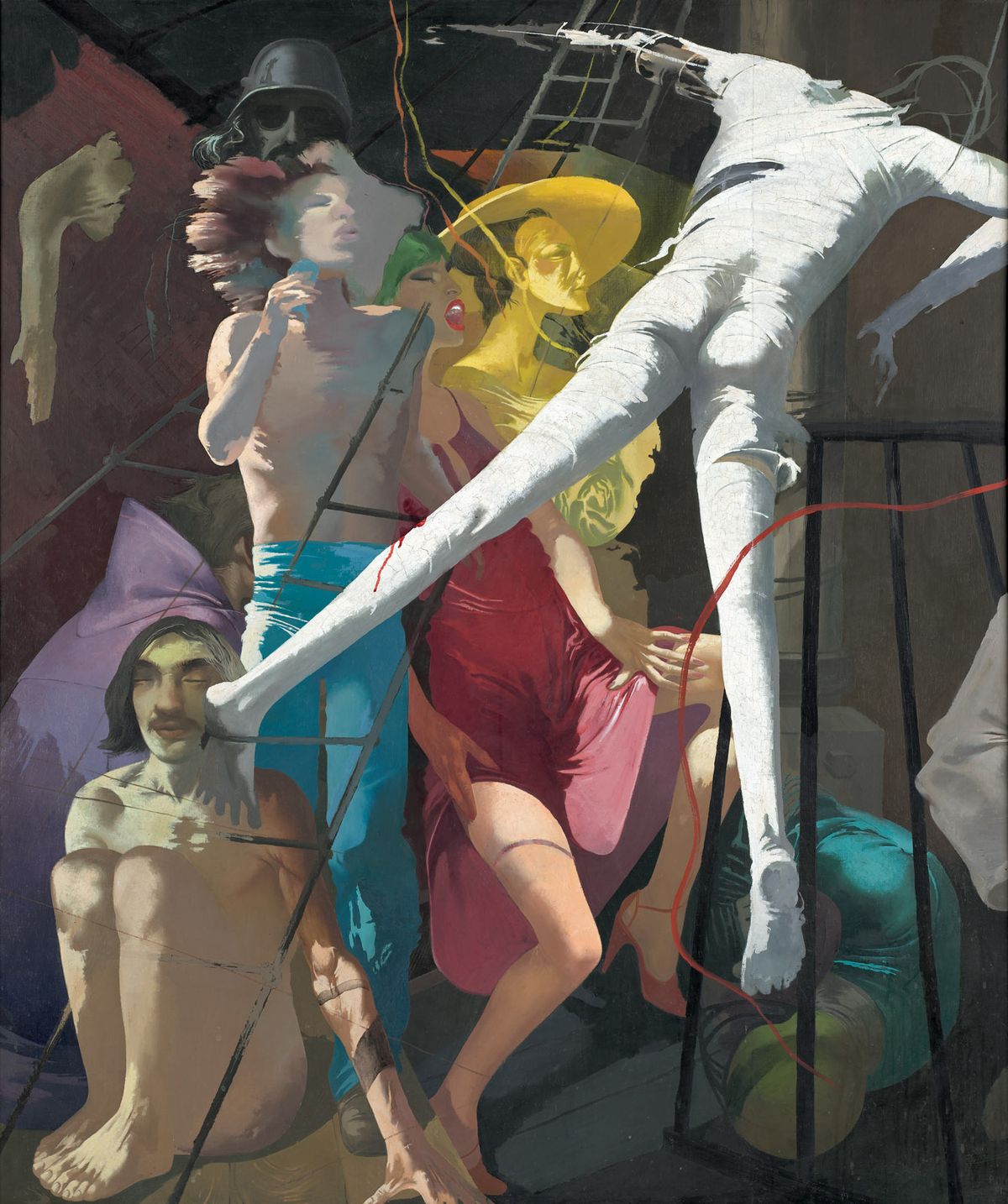Last September, the art historian Paul Kaiser reignited a debate over East German art that has simmered for decades. In a blistering polemic in the Sächsische Zeitung newspaper, he expressed his dismay that Dresden’s Albertinum, the main showcase for Modern art in the Saxon capital, had consigned all the art of Communist East Germany to the depot.
“If a tourist were to walk through the halls once reserved for East German art, he could come away with the impression that the German Democratic Republic never existed,” he fumed. Kaiser, an expert in East German art, accused the museum’s western German director, Hilke Wagner, of focusing on contemporary art to the detriment of the post-war art of the East. Wagner fought back, pointing out that many of the paintings Kaiser had missed were on loan to exhibitions elsewhere, and that she had chosen instead to exhibit Dresden artists of the GDR era who had not so far received the recognition they deserved.
The debate nevertheless touched a nerve. Wagner was inundated with hate mail. The Albertinum briefly became the focus for a resentment that has fuelled such political movements as the anti-immigration Pegida or the right-wing populist Alternative for Germany. It is resentment that eastern German living standards still lag far behind those in the west, that eastern German interests have been overlooked in a united Germany and, perhaps most importantly, that the East German historical narrative has been rewritten from a Western perspective.
Almost 30 years after the fall of the Berlin Wall, East German art is still finding its place in the art history of a reunified Germany and struggling to overcome Western prejudices. But change is on the horizon. Museums in eastern Germany are slowly beginning to unearth their rich collections of post-war East German art and return it to their walls. Even Kaiser concedes that the situation has improved. “We are on the right path towards synthesising GDR art into German art history,” he says. “But Dresden makes clear what a struggle this is.”
This battle over East German art dates back almost 30 years. Known as the “Bilderstreit” or the “battle over pictures”, it raged particularly ferociously in the years after reunification. While East German artists enjoyed great success in the West in the 1970s and 1980s—they featured at Documenta and the Venice Biennale—interest in them evaporated after reunification. The Bilderstreit was fuelled by commentators such as the painter Georg Baselitz, who in 1990 wrote off all East German artists as “arseholes” and said anyone who could paint left the GDR—as he had himself.
In Western minds, East German art was dismissed as Socialist-Realist kitsch. This was wrong; although images of happy workers in helmets or farm collectives in cornfields were produced in the GDR, these became far less common in the wake of Stalin’s death, as a much looser artistic policy took hold. Artists were permitted to produce whatever they wanted but if their art failed to conform with the preferences of the authorities it was unlikely to be exhibited.
Shortly after reunification, museums in the east were taken over by West German directors as a result of the “change of the elite”, in which many leading GDR officials were ousted from their positions for ideological reasons. East German museums began to collect post-war West German art, and the art of the GDR was indeed consigned to the depots by curators who had no interest in or understanding of it.
Hartwig Ebersbach, for instance, an East German artist whose exhibitions were closed down by the GDR authorities in the early 1980s, gained prominence in the West—and permission to travel—despite staying behind the Iron Curtain. His work was shown in galleries in Cologne, Brussels and New York in the late 1980s. “Before the fall of the Berlin Wall, East German artists were ‘exotic’ in the West,” he says. “Afterwards, we fell victim to a collective defamation. Since then, we have had to get to the back of the queue and wait for our work to be re-evaluated according to different criteria.”
That reappraisal appears, at long last, to be grinding into gear, and it is beginning to bear fruit. Ebersbach is among the East German artists on show at a temporary exhibition at the new Museum Barberini in Potsdam, which runs through to 4 February. The exhibition, Behind the Mask: artists in the GDR, has attracted much publicity and tens of thousands of visitors, and focuses on how East German artists dealt with the role they were assigned in the state. It encompasses a broad range; there are works by state-sanctioned artists such as Willi Sitte, whose self-portrait shows him standing proudly at his easel with a naked torso and a worker’s helmet, as well as abstract art, which was seldom exhibited during the years of the GDR.

Hartwig Ebersbach, who managed to achieve success in the West despite falling foul of the GDR authorities Monika Ebersbach
Abstract art was anathema to the East German authorities, who viewed it as inaccessible to the worker and part of a decadent Western tradition. On view in Potsdam, for instance, are the Typewritings of Ruth Wolf-Rehfeldt, a secretary who used her work tool to create geometric designs from typewritten words and symbols. These were distributed by post, and subject to frequent interceptions by the Stasi, the GDR’s secret police.
The Barberini was founded—and funded—by Hasso Plattner, a billionaire and one of the founders of the software company SAP. Plattner has collected East German art for many years. “I don’t understand why, even today, after all these years, these artists are still barely represented in museums,” he said in an interview with the Süddeutsche Zeitung. “I wanted to give them a forum… I think that the people in the East were disadvantaged during the GDR, and that after reunification, they were unfairly treated again.” Plattner plans to continue collecting East German art for his museum.
Beyond the temporary exhibitions of East German art—of which there have been several since reunification—museums in Leipzig and Halle are rehanging their permanent displays to better represent the local artists active during the years of the repressive Communist regime. At the Moritzburg Art Museum in Halle, a new permanent exhibition of post-1945 art opens on 24 February. With 100 works over two floors, the museum aims to present “a collection that, for historical reasons, represents primarily the art of the GDR.”
The exhibition will “contrast the official Socialist-Realist positions with the works of artists who looked for ways to remain in contact with international developments or to develop Modernist positions”, a statement from the museum says. Artists represented will include those such as Sitte and Werner Tübke who were celebrated by the GDR regime, and those with more ambivalent official standing, such as Ebersbach and A. R. Penck, who fled East Germany in 1980.
On a visit to Leipzig before taking up his post there as the director of the Museum of Fine Arts in August 2017, Alfred Weidinger, an Austrian, searched in vain for East German art in the city’s museums. “I knew this art existed but I couldn’t see it anywhere,” he says. Six months into his tenure, Weidinger is preparing a new permanent exhibition at the museum, which will include GDR art in a show encompassing 1,500 sq. m. The Museum of Fine Arts is also opening a retrospective of the painter Arno Rink on 18 April. Rink, a painter of the second generation of the Leipzig School, died in September 2017. Weidinger met him twice a week over the two months before his death to prepare the exhibition (see box).
It is perhaps Weidinger’s position as an outsider that has allowed him to see the shortfalls in the Leipzig collection and the need for extensive research. Because basic research into artists’ biographies and oeuvres is often missing, Weidinger has undertaken that work himself, reserving time for at least three meetings a week with local artists. “Now is the time to do this,” he says. “Fortunately, many of the artists are still alive.” This, Ebersbach says, is what is needed. East German art “has to be fundamentally evaluated, and not just according to political criteria”, he says. “The selection process has not yet been completed. What was good? What was bad? Only when this work is done will things be freer, and that will take a while.”
There is still nowhere in Germany offering a course in East German art and no German university has a research or teaching post dedicated to it. April Eisman, an associate professor of art history at Iowa State University who has specialised in East German art and its reception, says that interest in its art is greater outside Germany than within.
She points to an exhibition of Tübke this year at the Fundatie Zwolle in the Netherlands and a recent project at the Museum of Modern Art in New York—in which she took part—to improve understanding of East German art. “There is increasing interest from outside, and that is where my hope lies,” she says. “I would love to see a change.” Slowly, that shift is beginning to happen.


